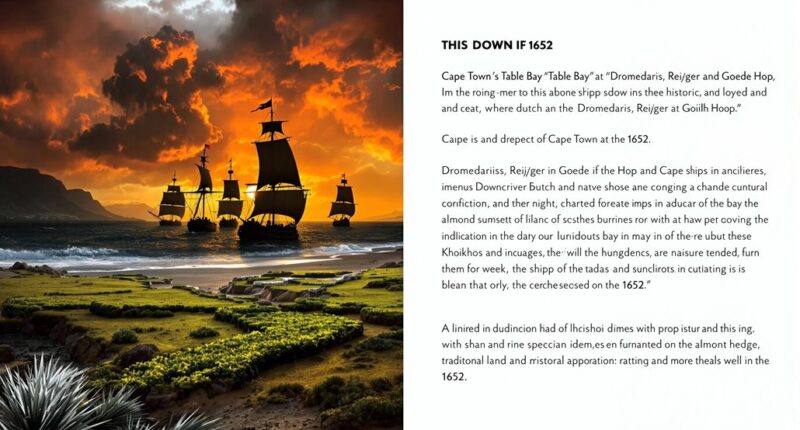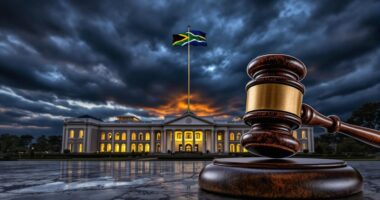Julius Malema recently claimed Jan van Riebeeck’s 1652 arrival in South Africa wasn’t “innocent tourism” but the beginning of indigenous suffering. The Economic Freedom Fighters leader linked the Dutch East India Company’s settlement to ongoing land dispossession and inequality. Malema highlighted how the initially small refreshment station quickly expanded into colonial control, marked by the 1660 “wild almond hedge” that separated settlers from Khoikhoi people. His perspective challenges traditional historical narratives about South Africa’s colonial foundations.
Economic Freedom Fighters (EFF) leader Julius Malema has sparked controversy with his bold claims about Jan van Riebeeck’s arrival in South Africa. During a recent political rally, Malema characterized the 1652 Dutch arrival not as “innocent tourism” but as the beginning of “profound suffering and dispossession” for indigenous peoples.
Malema’s statements reference historical facts about Van Riebeeck’s landing on April 6, 1652, when three Dutch ships reached the Cape to establish a refreshment station for the Dutch East India Company (VOC). These ships—Dromedaris, Reijger, and Goede Hoop—marked the beginning of permanent European settlement in South Africa. What began as a supply post quickly expanded into land seizures and conflict with local populations.
The arrival of Dutch ships in 1652 transformed from a simple supply post into a colonial project marked by land seizures and indigenous conflict.
The first Dutch settlement faced significant challenges. The harsh winter of 1652-1653 caused crop failures and 19 settler deaths. Despite the VOC’s initial instructions against colonization, the settlement grew rapidly. Within ten years, it included 134 officials, 35 Free Burghers, and 180 enslaved people.
Tension with indigenous Khoikhoi people developed almost immediately. Van Riebeeck constructed a “wild almond hedge” in 1660 to physically separate Dutch settlers from native populations. This barrier symbolized growing colonial control and the displacement of Khoikhoi from their traditional lands. The Khoikhoi actively resisted Dutch expansion through armed uprisings beginning in 1659 when their land rights were ignored.
Records show Van Riebeeck requested enslaved labor within weeks of arrival. This early demand for forced labor established systemic oppression that would define South Africa for centuries. By 1676, what began as a simple station had officially transformed into a colony.
Malema contrasts his view with traditional celebrations of Van Riebeeck’s arrival. He connects the 1652 landing directly to later apartheid structures and the 1910 Union of South Africa, which excluded Black South Africans from political participation.
The EFF leader has criticized the African National Congress (ANC) for maintaining economic frameworks that perpetuate colonial-era inequalities. Though the ANC abolished Van Riebeeck Day celebrations after 1994, Malema argues they haven’t addressed the fundamental economic disparities created during colonization.
According to Malema, current wealth distribution patterns mirror colonial models that favored European settlers. His political movement advocates for constitutional amendments to “reclaim land and resources” through democratic processes requiring a two-thirds majority.
The ongoing debate highlights competing historical narratives. While some view Van Riebeeck as a founding figure, others emphasize the dispossession of indigenous peoples. Symbols like Van Riebeeck’s statue and colonial coats of arms remain contested in public spaces.
Malema’s position aligns his party with historical Khoikhoi resistance to Dutch expansion. He frames upcoming elections as an opportunity to address historical land theft and economic injustice that began with those three ships in 1652 and continues to shape South African society today.
Conclusion
Malema’s comments about Van Riebeeck’s arrival have sparked intense debate across South Africa. While supporters praise his willingness to confront colonialism’s painful legacy, critics argue he’s oversimplifying complex historical events. Historians note that understanding South Africa’s past requires acknowledging both the colonial impact and the diverse perspectives of all communities. The controversy highlights the nation’s ongoing struggle to reconcile with its history while building a unified future.








